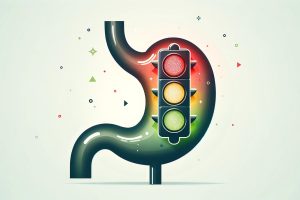
Digestion is an autonomous bodily activity that most people don’t notice—until something like gastroparesis occurs. The disorder causes food to empty from the stomach much slower than normal, leading to unintentional weight loss, malnutrition, bloating, and abdominal pain. Frequently associated with diabetes, the combination of the two ailments can cause severe health issues sometimes requiring surgical intervention to widen the valve between the stomach and small intestine. However, these invasive, inpatient procedures don’t work well for everyone.
A Johns Hopkins engineering team has developed StomachSim, a computer-aided simulation shedding light on pyloric intervention surgery outcomes. This new model could help physicians better predict which patients will respond positively to the procedure. The team’s findings appear in the Journal of the Royal Society Interface: “In silico modelling of the effect of pyloric intervention procedures on gastric flow and emptying in a stomach with gastroparesis.”
“Not all patients respond equally to this treatment, that’s the highlight,” said Sharun Kuhar, a fourth-year doctoral student of mechanical engineering, who worked with Rajat Mittal, a professor of mechanical engineering at the Whiting School of Engineering, on the study. “We’ve tried to mimic the critical aspects of this disorder in our model, and the mechanisms behind why some patients respond to this surgery and others don’t.”
The team looked at two manifestations of gastroparesis: antral hypomotility—weakened muscular contractions in the stomach walls; and decreased gastric tone—reduced pressure from the stomach’s walls on its contents. The team’s model is designed to simulate both phenotypes as well as a normally functioning stomach (as a control) and then mimics post-surgery effects. The study found that patients with hypomotility benefit more from surgery than patients suffering from decreased gastric tone. When both conditions are present, the procedure is helpful only if the stomach retains some of its gastric tone, according to StomachSim.
“The immediate impact of this study is to bring attention to the debate on how to better select patients [for this procedure],” Kuhar said. “Our results suggest new answers to the longstanding mystery of why some patients do not improve after pyloric intervention procedures.”
Kuhar said that though the team started with the two most common phenotypes that cause gastroparesis, their long-term goal is to model the stomachs of specific patients and to continue adding more complexities to this model.
“With patient-specific models, we would be able to capture their stomach shapes and contractions as it is, without any simplifications or assumptions, tailoring our results for individual subjects instead of general results,” he said.
The team focused on gastroparesis because computational modeling of gastrointestinal biomechanics is a field ripe for research that, despite gaining popularity, is still decades behind other disciplines like cardiology.
“The stomach remains a highly understudied organ,” Mittal said. “We are therefore quite excited to deploy the very latest in computational modeling tools to address the biomechanics of this important organ.”
Jung-Hee Seo, associate research professor of mechanical engineering, is a co-author of this study.